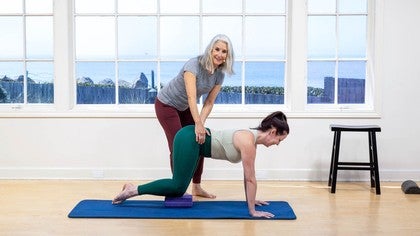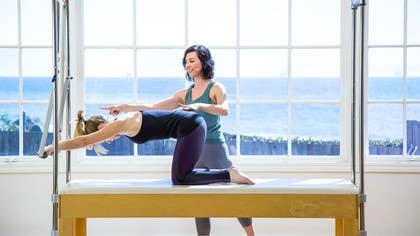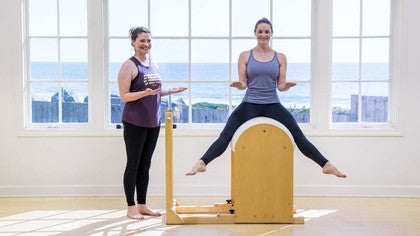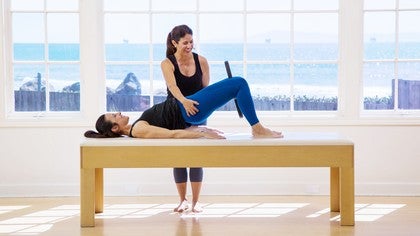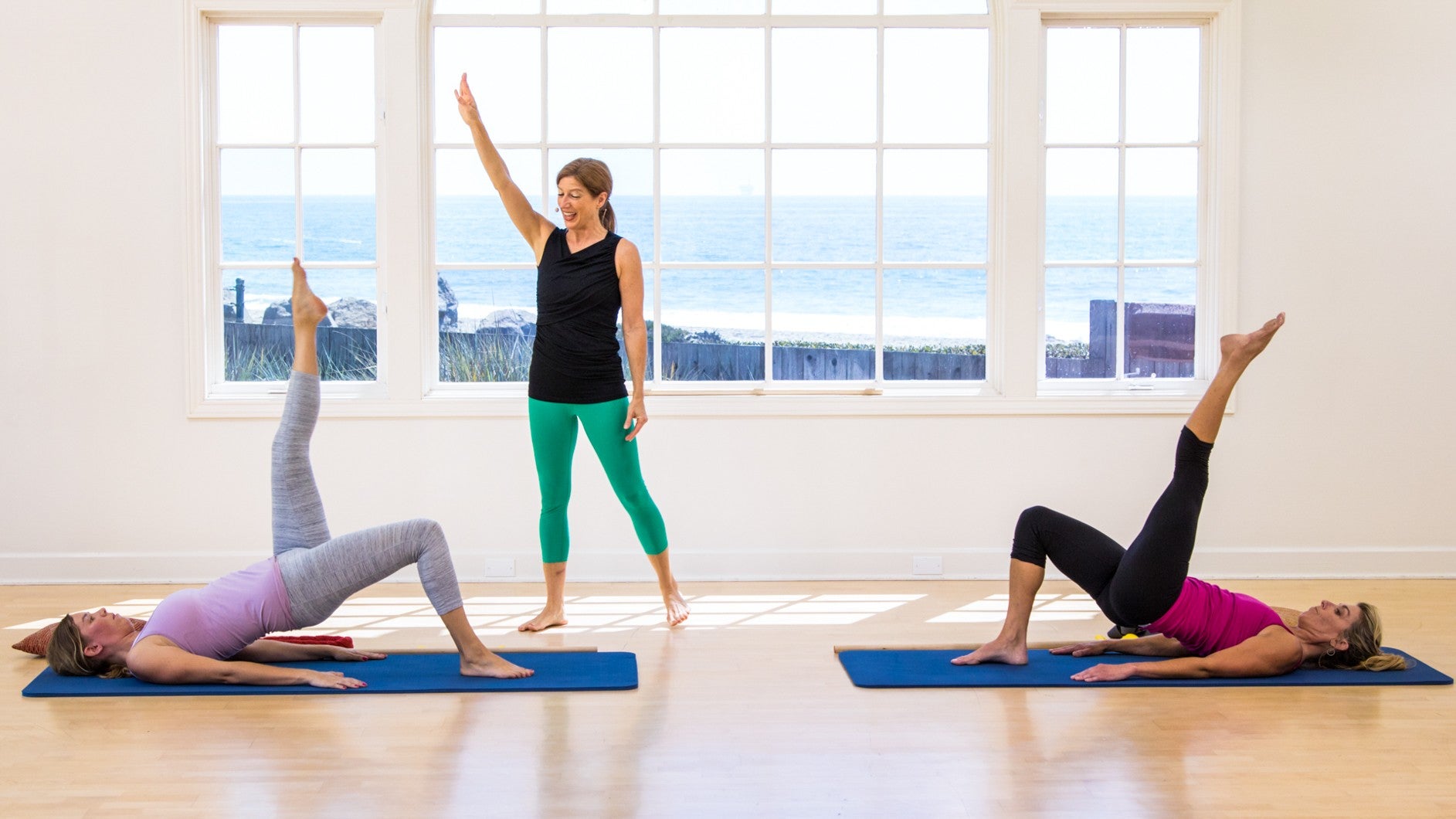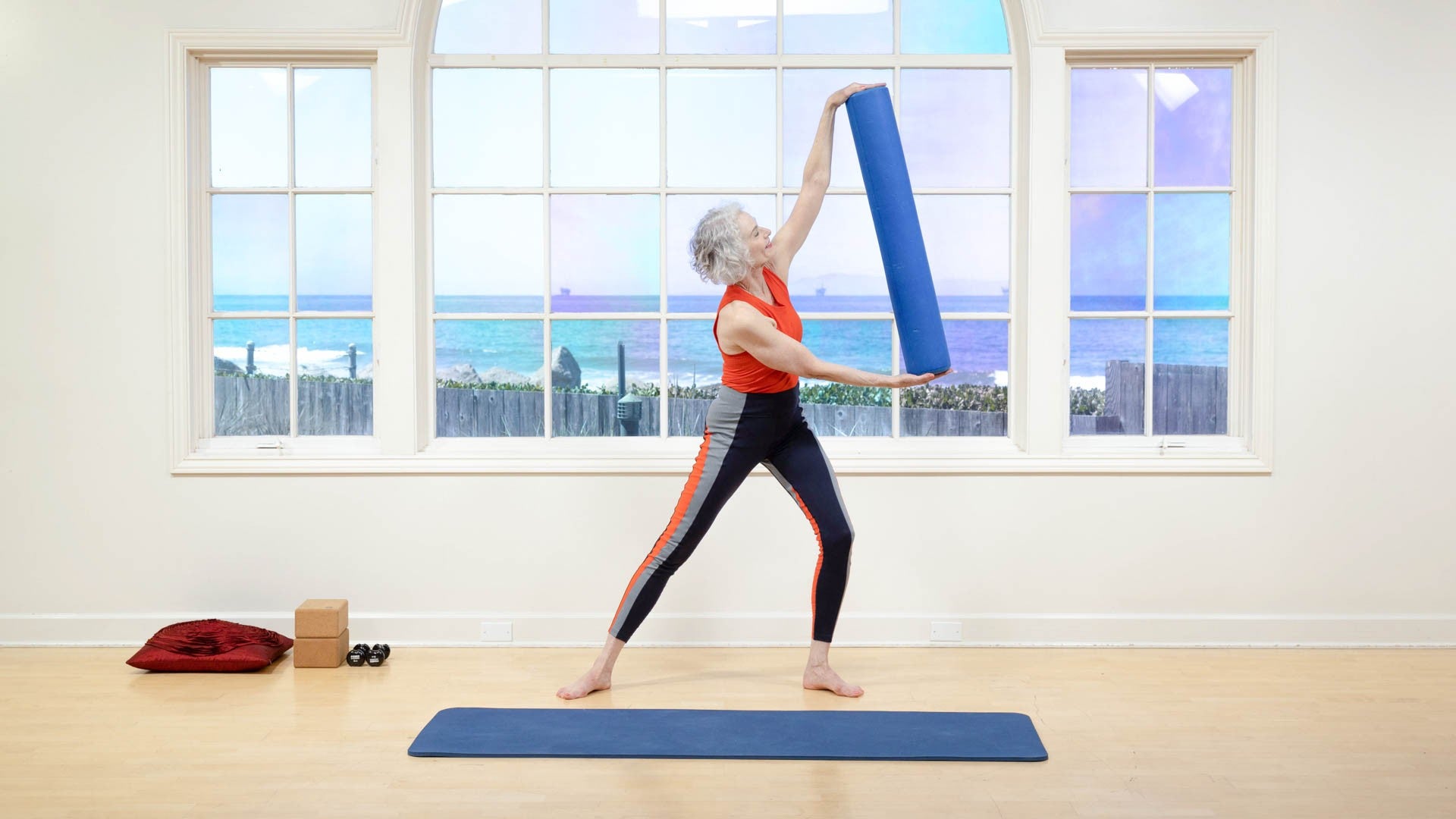
Can I do Pilates if I have Osteoporosis?
It can be scary to try new things, especially those requiring feats of strength, balance, or coordination. That fear may be more acute in those with osteoporosis, the condition characterized by low bone mass or brittle bones that are prone to fractures and breaks.
Is it Safe to Do Pilates with Osteoporosis?
The term osteoporosis comes from the Latin words for “porous bones.” The spine and hips are particularly at risk, as are wrists. As a result, for people with osteoporosis (the condition affects more women than men), twisting or rounding the spine is contraindicated, or to be avoided. Pilates, which involves a lot of spine rounding and twisting, might not seem well-suited for the more than 14 million Americans with osteoporosis and the additional 48 million with low bone density.
Why Pilates is Good for Those With Osteoporosis
Armed with a few guidelines, people with osteoporosis can benefit from a Pilates program. Pilates is low-impact, it’s gentle on the joints, and it’s supremely adaptable to all life stages and ages. In addition, whether it’s done on a Mat or a Reformer, Pilates strengthens the all-important core and trunk muscles. This type of work makes everyday activities easier, more efficient, and safer for those with osteoporosis and osteopenia.
“Strengthening the muscles of your mid-back and legs has been shown to be most effective for building bone and preventing fractures,” says Sherri Betz, PT, a physical therapist and director of TheraPilates® Physical Therapy, in Monroe, Louisiana, and the osteoporosis expert at Pilates Anytime.
Get Started with Pilates
Pilates cultivates postural awareness, in particular an awareness of the shapes of the spine. Learning what a flat back or tall spine looks and feels like is important, because skills acquired in a Pilates studio or on a Mat transfer to daily life. Bending from the knees with a flat back while unloading groceries from a car trunk or emptying the dishwasher becomes second nature if you’ve practiced those movements in Pilates class. Keeping the chest lifted and the shoulder blades “back and down” are cues that are commonly heard in a Pilates Mat class. They are just as useful in encouraging proper posture in daily tasks like picking up a pet or brushing your teeth.
“Posture correction, coupled with dynamic balance challenges, have been shown to be effective in fall and fracture prevention,” says Betz, who specializes in geriatric orthopedics and osteoporosis.
Exercises that challenge balance include “bird dog” (reaching one arm and the opposite leg from an all-fours position), single leg exercises on the Wunda Chair, and splits on the Reformer. Improving balance reduces the risk of falls that can be so dangerous for people with osteoporosis or osteopenia.
Still not convinced? Pilates diehards also cite mood elevation, improved mobility, and increased confidence as additional reasons to take up Pilates.
Guidelines for Your Safety
If you are ready to get started with a Pilates routine, Betz offers the following suggestions:
- Avoid forward and loaded flexion or twisting. That means no Hundred, no Roll Ups, no Rolling Like a Ball, no Saw, among others. Instead, improve core strength with Single Leg Kick, planks with the knees on the Mat, and the Pre-Pilates exercises that don’t involve lifting the head off the floor, such as Marching, Toe Taps, and Dead Bug.
- Focus on extension, or backbending, with Swan, modified Cobra pose from yoga, or a modified Double Leg Kick.
- Practice hinging from the hip with a flat back, as in squats. This will strengthen the legs and trunk and set up good postural habits for everyday tasks that involve lifting.
- Avoid deep spinal twisting. Instead, focus on gentle twists with both shoulders on the Mat (sometimes cued as “keeping the chest broad”). This can help with driving and other activities that involve turning the head to one side.
Ready to give Pilates a try? Get started with these Pilates classes that have been designed for those with osteoporosis. Let us know your progress in the comments below.
Comments
You need to be a subscriber to post a comment.
Please Log In or Create an Account to start your free trial.

